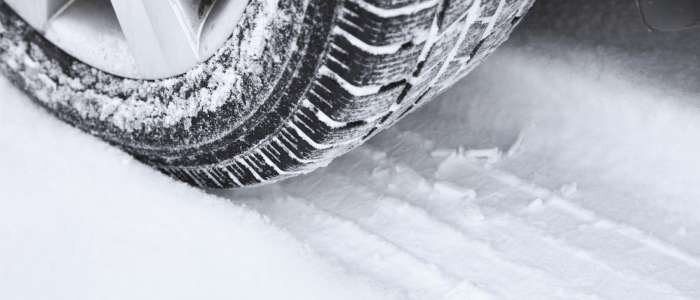DISCOVER HOW TO CHOOSE OUR WINTER TIRES IN 7 STEPS!
Driving in snow or cold weather is inevitable. Like every responsible driver, you’re probably wondering how to figure out which winter tires to choose. Here’s a tip: ignore your friends and family. Your brother-in-law may brag that he found some amazing winter tires, but that doesn’t mean his tires are right for your vehicle. We can’t say it enough—it’s absolutely vital to consider your vehicle type and driving habits when choosing your tires.
Here are 7 tips to help you strike the right balance between your needs and your budget when purchasing your next set of winter tires.
1. Know your tire size
First and foremost, make sure you know the size of your tires—it’s one of the first questions you’ll be asked in store. Your winter tires and your summer tires must be the same size.
To find out the size of your tires, just take a look at the sidewall. You’ll find a code similar to this one: P225/60 R17. Here’s how to read the tire code:
225 – This number corresponds to the width of the tread, or the part of the tire that touches the road, in millimetres.
60 – This number represents the ratio (as a percentage) between the top of the tire (sidewall height) and the width of the tread (section width).
17 – This number indicates the interior diameter of the tire, in inches.
To learn how to read the other information in the tire code, check out our article: How to Read a Tire Sidewall?
2. Know the types of roads you drive on
This is crucial when choosing winter tires. Do you drive mainly on city roads, side roads, or highways?
If you drive a lot, make sure you invest in high-quality tires. This is especially important if you drive a compact car, which is more likely to skid in poor conditions.
If you drive mainly in the city, tires with a good price-quality ratio will do the job.
3. Look at the tires
It might seem obvious, but take the time to go to the store. You can visually compare the quality of the different tires available, especially the grooves, flexibility, and lateral stiffness.
Keep in mind that large grooves provide better traction on winter surfaces, while helping to displace snow and slush.
You can also check the quality of Chinese-manufactured tires. They may be less expensive, but they wear out faster and offer poorer handling capabilities.
4. Ask the right questions
A good sales rep will know the right questions to ask to help you pick your winter tires. Beyond the routine use of your vehicle, they’ll ask about your annual mileage, where you live, and, most importantly, your budget.
A thorough sales rep will also ask if you want reinforced tires, for better control when turning, and will explain the different types of treads (with or without studs), as well as the pros and cons of each, especially in terms of noise levels.
5. Choose between snow tires and ice tires
Which are better, snow tires or ice tires? Generally speaking, ice tires are considered superior, since they offer excellent traction on snow as well as ice, while the opposite isn’t always the case.
Ice tires are recommended if you drive mostly on highways and dry surfaces. If you mainly drive downtown, opt instead for tires with better traction to help you get through snow banks.
6. Learn about handling and braking
Your winter tires have a major impact on handling and braking, which is one of the main reasons why winter tires are mandatory. When the temperature drops below 7°C, all-season tires lose too much traction and flexibility for safe driving.
With better tires, your vehicle will brake more effectively and reliably and will also handle better when turning.
7. Avoid mixing and matching your tires
Having different brands of tires on a vehicle is never a good idea. This can affect your driving, lead to poor handling, and cause premature wear on some parts. Avoid mixing tires as much as possible.
If you drive a 4x4, this is even more important. Make sure you install four identical tires of the same brand or you’ll be adding extra stress to your vehicle’s differential.
Your winter tires should meet your needs and shouldn’t be based on the recommendations of your friends and family. Take the time to think about your driving habits and relay this information to the sales reps you meet. They’ll be able to guide you through the purchasing process.
Keep in mind that there’s no such thing as a perfect tire! Even the most expensive and specialized tires have their strengths and weaknesses. Purchasing winter tires always includes an element of compromise.
Last but not least, don’t wait too long to pick your winter tires and get them installed, because in addition to the legal obligation, the quantities are also limited.
Our service team is available for any questions.
Source: Point S





